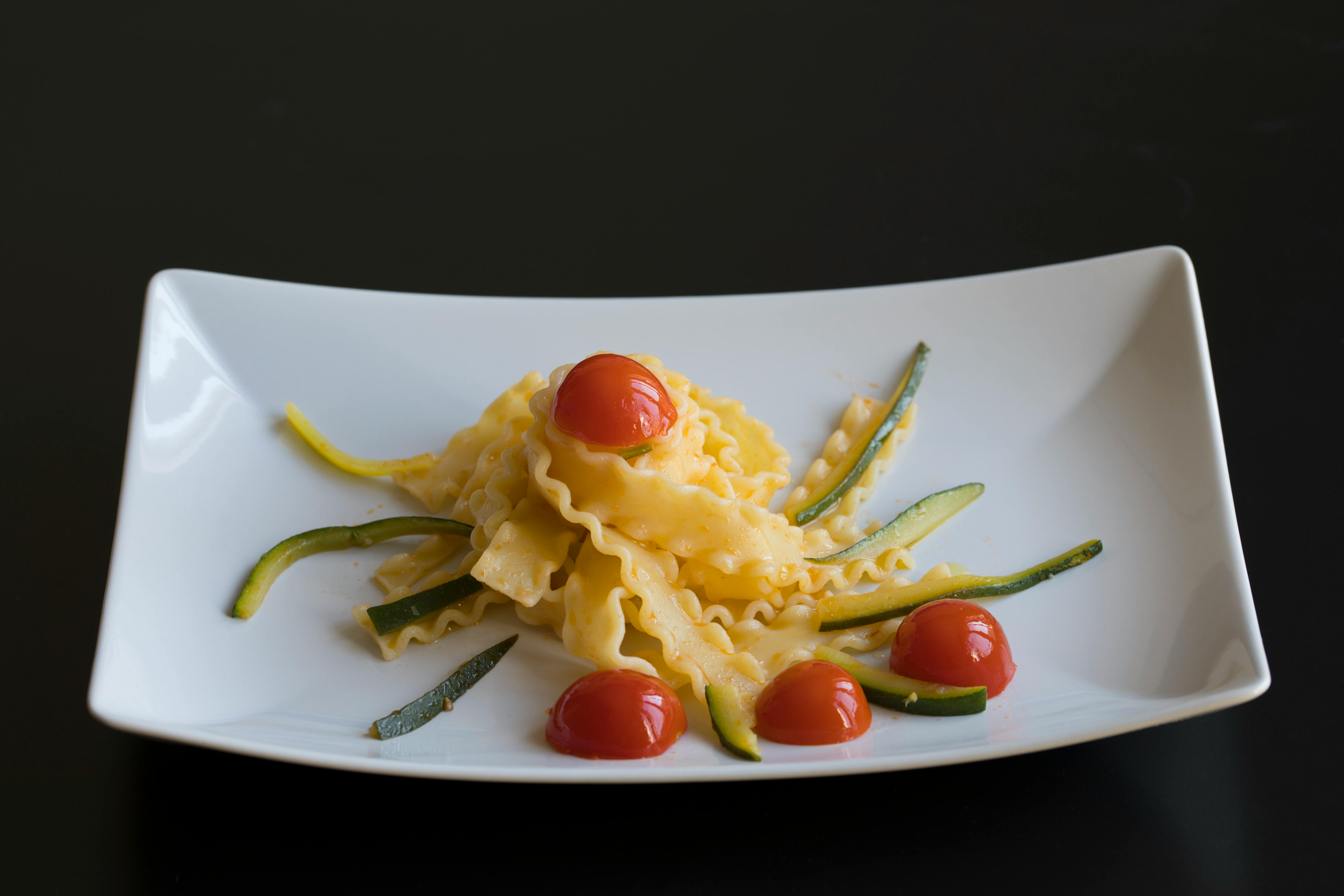Simple Guide to Pasta Serving Size for Effective Meal Planning
Pasta is a beloved staple in many households worldwide. However, understanding the correct pasta serving size is vital for effective meal planning and maintaining a balanced diet. Proper portion sizing can influence overall dietary health, contribute to weight management, and enhance the enjoyment of meals. This comprehensive guide explores pasta portion control, recommending serving sizes, and practical tips for various pasta types, catering to different dietary guidelines.
By learning the recommended pasta serving sizes, meal planners can better control calorie intake while maximizing flavor and satisfaction. This article will cover everything from typical serving sizes for various pasta types to practical suggestions for families and individuals who want to maintain a healthy diet without compromising on taste.
Key takeaways will include:
- An overview of ideal pasta serving sizes
- Tips on measuring pasta for different meal types
- Recommendations for family meal planning
- Understanding the nutritional content of pasta servings
Understanding Pasta Serving Sizes
Before diving into specific serving sizes, it’s essential to understand what a portion size pasta refers to. Generally, the ideal pasta serving size for adults falls between 2 to 3 ounces of dry pasta per person, which translates into approximately 1 cup of cooked pasta. This amount may vary based on dietary needs or meal context. Additionally, educational resources like the pasta nutrition facts can offer deeper insights into the caloric values and benefits.
Common Pasta Types and Their Typical Serving Sizes
Different pasta shapes may have varying serving size recommendations. For instance, a recommended serving size for spaghetti typically hovers around 2 ounces dry per serving, while elbow macaroni suggests a similar measurement but may vary due to its shape's unique characteristics. The metric is crucial to ensure balanced meals and effective diet management.
Here are some common pasta types and their recommended serving size:
- Spaghetti: 2 oz. dry or 1 cup cooked
- Penne: 2 oz. dry or 1 cup cooked
- Fettuccine: 2 oz. dry or 1 cup cooked
- Farfalle: 2 oz. dry or 1 cup cooked
- Mac and Cheese: 1 cup prepared for a single serving
Potential Pitfalls with Pasta Portions
Overly large pasta servings can lead to unintended overconsumption of calories and carbohydrates. Understanding common pitfalls allows families to manage pasta-based meals better. The average serving size for pasta salads often exceeds the standard, leading to portions that may not align with dietary goals.
To avoid exceeding calorie intake, consider:
- Measuring pasta before cooking
- Opting for smaller bowls to create the illusion of a fuller plate
- Pairing pasta with vegetables or proteins to create a more balanced meal
Pasta Serving Suggestions for Family Meals
Meal planning for families is different from individuals, necessitating the adjustment of pasta serving recommendations. Family meal preparations typically involve larger quantities and should take into account varying preferences among family members. Integrating a selection of sauces and toppings allows families to customize their plates while being mindful of pasta serving size tips.
Creating Balanced Family Meals with Pasta
When preparing pasta for a family, consider offering serving suggestions that incorporate a balance of nutrients. For example, combining pasta dishes with salads, proteins, and varying sauces can yield a nutritious meal without drastically increasing the calorie count.
Examples include:
- Serving bow tie pasta with chicken and broccoli tossed in olive oil
- Pairing angel hair pasta with a fresh tomato basil sauce and a side salad
- Creating a mac and cheese dish using whole grain pasta to enhance fiber content
Cooking Pasta Servings for Large Groups
Preparing pasta for gatherings requires careful calculations to ensure sufficient portions for everyone without excess food waste. The pasta serving calculator can be useful here, taking into account factors such as age and appetite levels. For a gathering, the general recommendation is to provide approximately 3-4 ounces of dry pasta per person.
Additionally, consider how sauces and sides will affect portion sizing. A dish served with a heavy sauce may require a smaller pasta portion than a light olive oil dressing. Planning carefully can enhance the dining experience while being cost-effective.
Pasta Portion Control and Dietary Guidelines
Portion control is essential for weight management and overall health. Effective pasta meal serving sizes can help individuals meet their dietary goals by preventing excessive carbohydrate intake. Familiarity with pasta dietary guidelines is also vital for making informed choices, especially for those managing health conditions or weight loss goals.
How to Measure Pasta Servings Accurately
For accurate portioning, it’s beneficial to employ measuring tools. Use a food scale for precision or the "men's fist" or "palm" method for cooking pasta servings. A 2-ounce serving of dry pasta is generally the amount that fits comfortably in a person's fist, providing a simple visual guide.
Moreover, considering different pasta shapes is essential because some, like fettuccine, may appear larger when measured in bulk compared to smaller types like angel hair. Utilizing a pasta serving size chart can offer a quick reference for measuring various pasta types effectively.
Pasta Serving Size for Kids and Healthy Eating
Understanding serving sizes is particularly important for children. The recommended pasta serving size for kids usually ranges from 1 to 2 ounces dry pasta, depending on their age and activity level. Teaching children about portioning encourages healthy eating habits from a young age.
Fun Ways to Introduce Kids to Pasta Portion Control
Involving children in the cooking process can make them more aware of meal sizes and nutrition. Help them learn proper portion control pasta techniques, such as measuring out pasta before cooking or creating a pasta dinner menu together. Engaging them in these activities helps reinforce healthy choices.
Some fun ideas include:
- Creating pasta shapes: Use color-coded cups to represent different serving sizes
- Personalizing plates: Allow kids to design their own pasta dishes with different toppings
- Cooking collaboratively: Involve kids in preparing meals to foster a sense of responsibility
Pasta Calorie Counts and Nutritional Considerations
The pasta calorie count largely depends on the type. Typically, pasta contains around 200 calories per 2-ounce dry serving. Choosing whole grain or high-protein pasta can be beneficial, as these options often provide more fiber and nutrients.
Understanding Nutritional Content of Pasta
The nutritional value of pasta can influence your portion decisions. While Italian dishes may be appetizing, understanding the fundamental benefits of each pasta type can help tailor dietary preferences. Acknowledging that not all pastas are created equal is crucial.
Consider opting for the following:
- Whole grain pasta: Higher in fiber and nutrients
- Vegetable-based pasta: Ideal for added vitamins and minerals
- Gluten-free options: For individuals with gluten sensitivities
Portion Strategies for Weight Management
Effective pasta portion strategies involve balancing enjoyment with health goals. Integrating vegetables or protein into pasta dishes can provide fullness without adding excessive calories. Moreover, utilizing pasta serving measurements throughout daily eating allows one to adhere to dietary advice effectively.
Ultimately, understanding portioning whole grain pasta or gluten-free options is crucial for individuals looking to control weight while still enjoying pasta.
Frequently Asked Questions about Pasta Serving Sizes
What is the standard serving size for pasta?
The standard serving size for dried pasta is approximately 2 ounces, which yields about 1 cup of cooked pasta.
How can I measure the right pasta portion?
Use a food scale for accuracy, or refer to visual measuring techniques, such as using your fist as a guide or pasta measuring tools.
Is there a difference in serving sizes between pasta types?
Yes, different types of pasta may require different serving sizes due to their shapes and density. It's essential to refer to specific recommendations for optimal serving sizes.
What are some tips for controlling pasta portions for weight loss?
Incorporate vegetables into the dish, use smaller plates for serving, and encourage eating smaller servings to promote mindful eating habits.
How can I make pasta dishes healthier?
Choose whole grain or vegetable-based pastas, incorporate lean proteins, and bulk up the dish with plenty of vegetables.

 Its part of generated content. Can i generate another part?
Its part of generated content. Can i generate another part? 